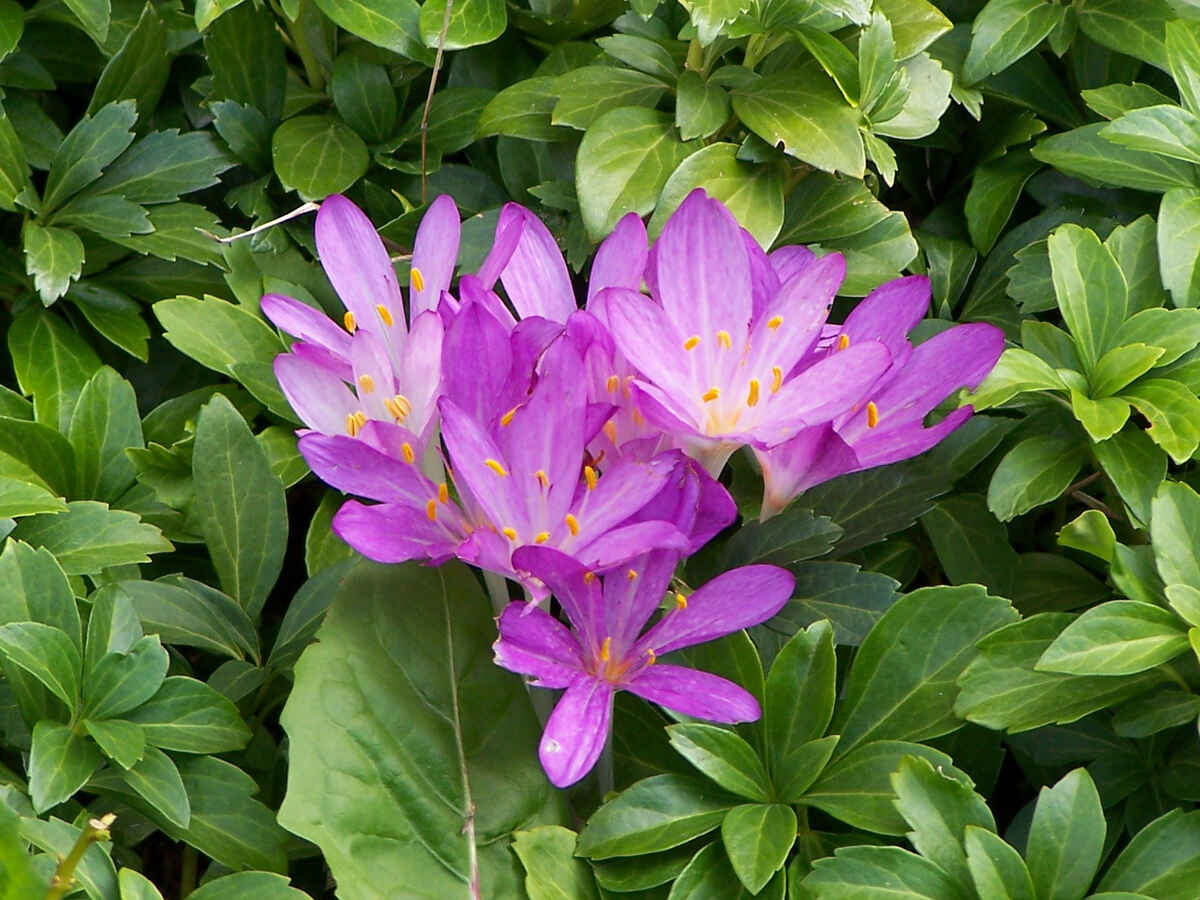
Many plants in are poisonous to cats — sometimes just the flowers or bulbs, but often all parts of the flower, tree, or shrub. So whether you have an indoor cat or an outdoor cat, this article details 32 common plants that can sicken or even kill your BFF (best feline friend).
Curiosity killed the cat, and in this case, that’s literally true. If your kitty is tempted to taste tulips or daffodils outdoors or that amaryllis sitting on your home office desk or kitchen counter, you could be racing to a veterinary ER soon after.
The American Society for the Prevention of Cruelty to Animals (ASPCA) estimates that more than 14,000 pets are poisoned by plants in the home or environment each year. If you suspect your cat is ill from ingesting a plant, call your local vet or the Animal Poison Control Center at 1-888.486-4435.
In this article, we’ll spotlight common indoor and outdoor plants that are toxic to cats. We’ll also note which parts of the plants are poisonous and what signs and symptoms to look for if you think your cat has eaten any of these plants.
Want to know what plants are safe for your cat? We’ve got that covered, too. See What Indoor Plants Are Safe for Cats? and What Outdoor Plants Are Safe for Cats? in the FAQ section in this article
Let’s get started. Here are the 32 common indoor and outdoor plants (in alphabetical order) that can sicken or kill your cat:
- 1. Aloe Plant
- 2. Amaryllis
- 3. Autumn Crocus
- 4. Azaleas
- 5. Castor Bean
- 6. Chrysanthemums and Mums
- 7. Cyclamen
- 8. Daffodils
- 9. Devil’s ivy
- 10. Dumb Cane
- 11. Elephant Ear
- 12. English Ivy
- 13. Eucalyptus
- 14. Foxglove
- 15. Garlic
- 16. Hyacinth
- 17. Hydrangea
- 18. Iris
- 19. Jade
- 20. Kalanchoe
- 21. Lilies
- 22. Lily of the Valley
- 23. Oleander
- 24. Peace Lily
- 25. Poinsettia
- 26. Sago Palm
- 27. Snake Plant
- 28. Spanish Thyme
- 29. Tomato Plant
- 30. Tulips
- 31. Wisteria
- 32. Yew
- Signs and Symptoms of Poisoning In Cats
- What To Do if Your Cat Eats a Poisonous Plant
- FAQ About Cats and Poisonous Plants
- When to Hire a Landscaping or Lawn Care Pro
1. Aloe Plant
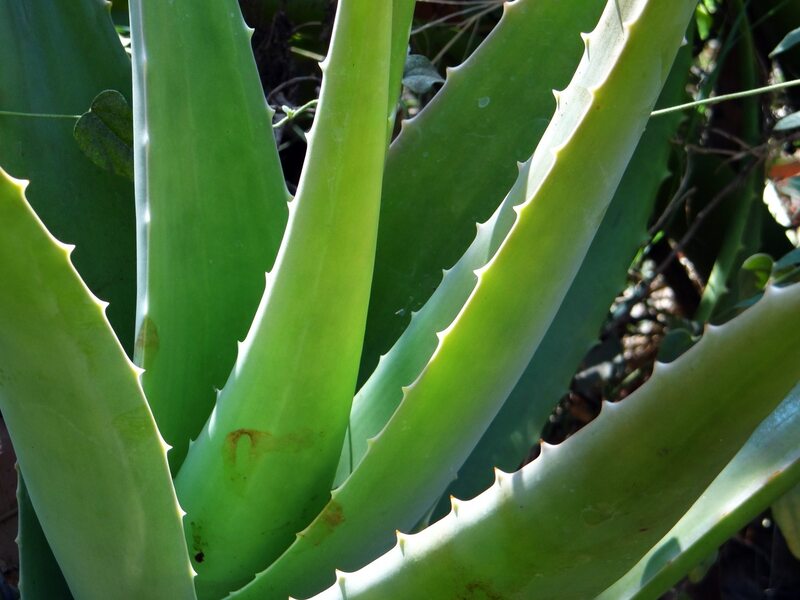
The aloe plant is treasured for its medicinal properties, helping to cool the skin after sunburn, but aloe is toxic if eaten by a cat.
All parts of the aloe plant are poisonous to cats and can cause gastrointestinal and neurological damage.
Identifying features: Green, spiky succulent leaves, sometimes with white spots, that grow in a rosette shape
Toxins: Saponins, which cause gastrointestinal and neurological damage, and anthraquinone glycosides, which can cause gastrointestinal upset.
Signs your cat has eaten aloe:
- Vomiting
- Diarrhea
- Lethargy
- Changes in urine color
- Loss of appetite
- Depression
- Tremors
2. Amaryllis
Nearly all parts of amaryllis can make your cat sick. Amaryllis blooms are beautiful to behold but the leaves, stems, and bulbs of the plant contain a toxin that can cause gastrointestinal upset, drops in blood pressure, and respiratory issues.
Identifying features: Bright red trumpet-shaped flowers with six petals, sometimes with white striations
Toxins: Phenanthridine alkaloids. The bulbs also contain raphide oxalate crystals, which can tear the soft tissue inside the digestive system. Amaryllis is poisonous to cats.
Signs your cat has eaten amaryllis:
- Vomiting
- Diarrhea
- Abdominal pain
- Drooling
- Loss of appetite
- Depression
- Tremors
- Lethargy
- Weakness
- Fainting
3. Autumn Crocus
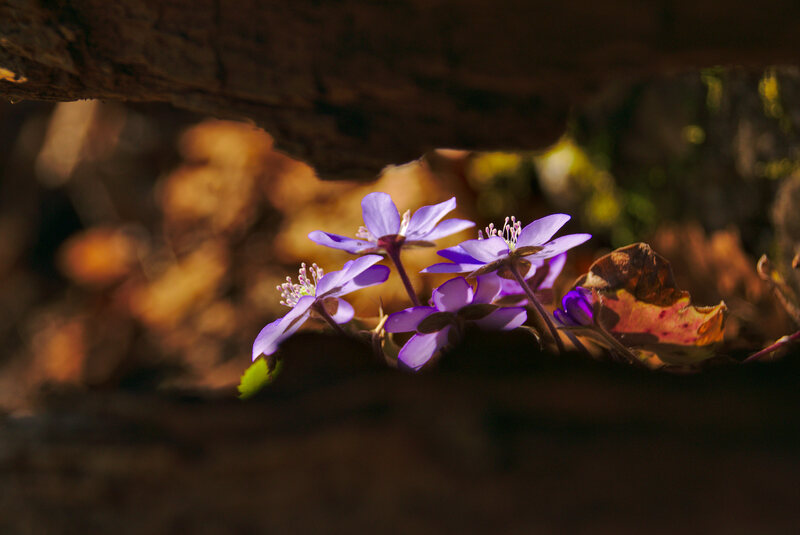
Eating autumn crocus can be fatal to cats and dogs. All parts of the plant contain a toxin that can cause severe damage to the gastrointestinal system, liver, kidneys, respiratory system, or central nervous system.
Identifying features: Blooms in early autumn; Light pinkish-purple bulbs with a white center and yellow stamens
Toxin: Colchicine, a toxic alkaloid.
Signs your cat has eaten autumn crocus:
- Drooling
- Vomiting
- Bloody diarrhea
- Seizures
- Panting
- Restlessness
- Lethargy
- Loss of appetite
- Excess thirst
- Weakness
- Behavioral changes
4. Azaleas
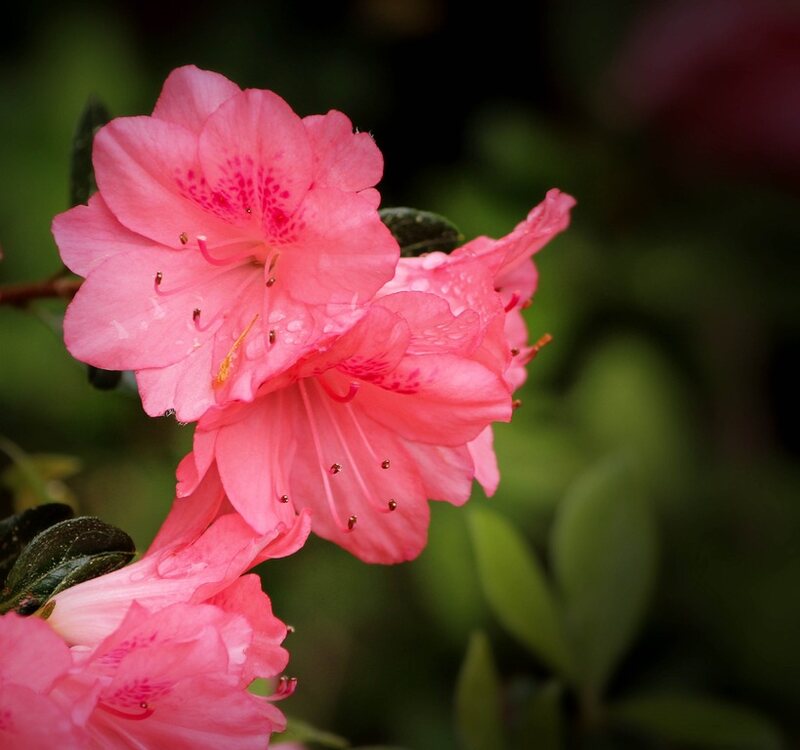
Azaleas are highly toxic, which is a problem because azaleas bloom for several months n spring, summer, or early fall, depending on the species.
Identifying features: More than 1,000 species of shrubs that can be deciduous or evergreen, large or small, with flowers of pink, white, red, or blue.
Toxins: All parts of the plant contain grayanotoxins, which can cause damage to the skeletal and cardiac systems.
Signs your cat has eaten azaleas:
- Vomiting
- Diarrhea
- Weakness
- Drooling
- Abdominal pain
- Loss of appetite
- Abnormal heart rate
- Depression
- Tremors
- Seizures
- Temporary loss of sight
5. Castor Bean
Eating castor beans can kill your cat.
Identifying features: Large, star-shaped evergreen leaves that can be green, maroon, purplish, or bronze colored; bright red flowers that look like spiky balls can bloom year-round.
Toxin: The beans contain ricin, a highly toxic compound that can be fatal to cats.
Signs your cat has eaten castor bean:
- Loss of appetite
- Drooling
- Abdominal pain
- Vomiting
- Excessive thirst
- Weakness
- Trembling
- Sweating
- Coordination loss
- Difficulty breathing
- Fever
- Bloody diarrhea
- Convulsions
- Collapse
6. Chrysanthemums and Mums

Keep your cat away from that bouquet of chrysanthemums on your kitchen table or the pot of mums on your front porch. Why? Chrysanthemums are poisonous to cats.
Identifying features: Fall-blooming flowers with feathery petals in bright orange, yellow, red, pink, lavender, or purple, depending on the species
Toxins: The flowers contain pyrethrins, which are used as pesticides.
Signs your cat has eaten mums:
- Vomiting
- Diarrhea
- Loss of appetite
- Excess salivation
- Loss of coordination
- Skin irritation
7. Cyclamen
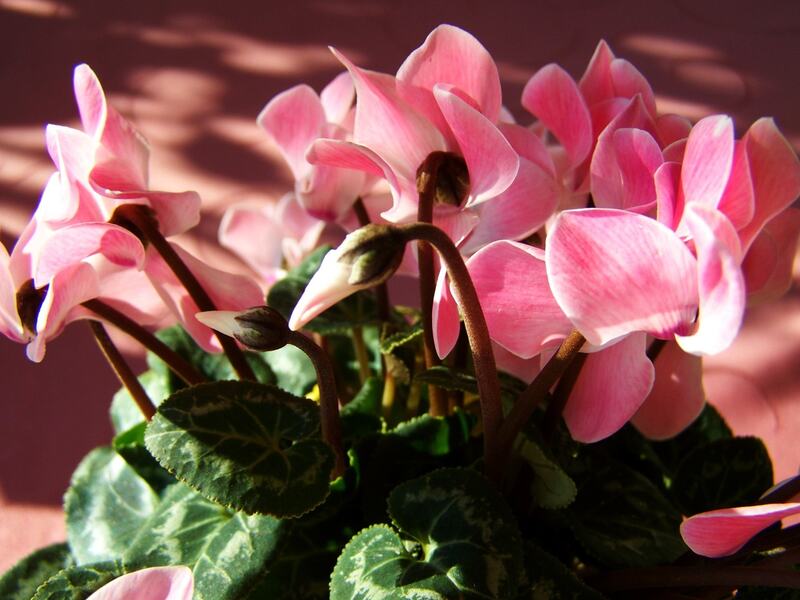
All parts of cyclamen are toxic to your cat.
Identifying features: Clumps of leaves that resemble tiny lily pads, with white, pink, lavender, or red flowers rising above the leaves on stems
Toxins: All parts of the plant contain saponins, which cause irritation when ingested in small quantities but can cause far more severe issues — even death — if consumed in large quantities.
Signs your cat has eaten cyclamen:
- Drooling
- Vomiting
- Diarrhea
- Abnormal heart rate
- Seizures
8. Daffodils

IAs lovely as these flowers look in the garden, daffodils are poisonous to cats.
Identifying features: Bright yellow, star-shaped flowers with a trumpet-shaped tube protruding from the center
Toxin: Daffodil bulbs contain lycorine, which triggers vomiting, and sharp crystals that cause severe irritation.
Signs your cat has eaten daffodils:
- Drooling
- Vomiting
- Diarrhea
- Abdominal pain
- Abnormal heart rate
- Abnormal breathing
- Low blood pressure
- Tremors
9. Devil’s ivy
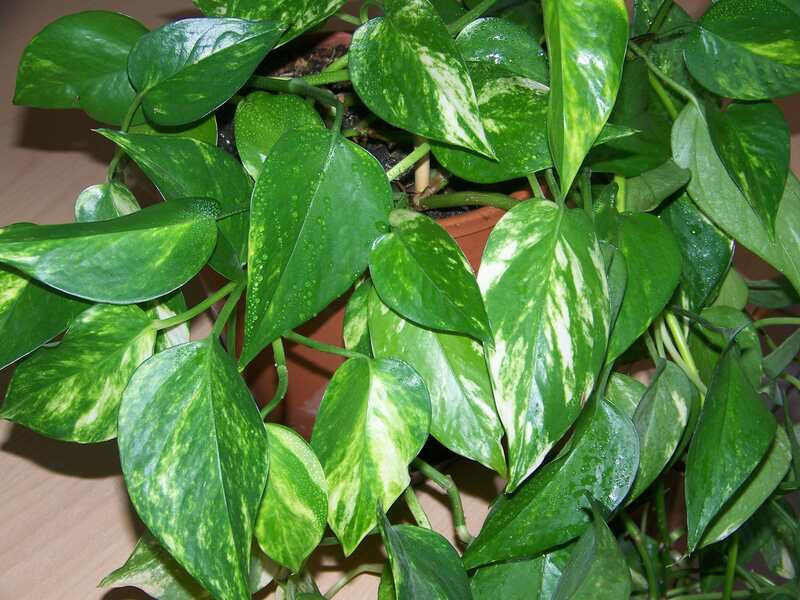
Devil’s ivy is bad news for cats. Eating the leaves of this vine may cause your cat to drool, vomit, or have difficulty breathing, but that’s just for starters.
Identifying features: Fast-growing vine with shiny green leaves; new leaves are variegated with yellow
Toxin: Devil’s ivy contains insoluble calcium oxalate crystals, which can irritate and penetrate tissue in the mouth and gastrointestinal tract.
Signs your cat has eaten devil’s ivy:
- Swollen mouth, tongue, and lips
- Oral irritation or pain
- Drooling
- Difficulty swallowing
- Vomiting
- Loss of appetite
- Rarely: Difficulty breathing
10. Dumb Cane
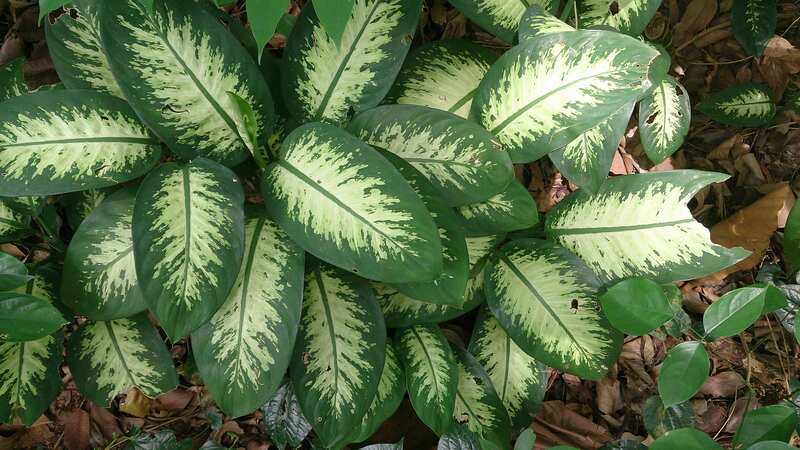
Dumb cane can sicken your cat. Considered an attractive houseplant, dumb cane contains the same toxin as devil’s ivy.
Identifying features: Large green leaves shaped like spearheads with green-white variegation
Toxin: Dumb cane contains insoluble calcium oxalate crystals, which can irritate and penetrate tissue in the mouth and gastrointestinal tract.
Signs your cat has eaten dumb cane:
- Burning and pain in the mouth
- Drooling
- Difficulty swallowing
- Vomiting
- Loss of appetite
- Rarely: Difficulty breathing
11. Elephant Ear
Elephant ears are a common houseplant, so keep your cat away from its poisonous leaves, roots, and stems.
Identifying features: Large, heart-shaped green leaves with ridges and ruffled edges
Toxin: This plant contains insoluble calcium oxalate crystals, which can irritate and penetrate tissue in the mouth and gastrointestinal tract when ingested.
Signs your cat has eaten elephant ears:
- Swollen mouth, tongue, and lips
- Oral irritation
- Drooling
- Vomiting
- Difficulty swallowing
- Loss of appetite
- Rarely: Difficulty breathing
12. English Ivy
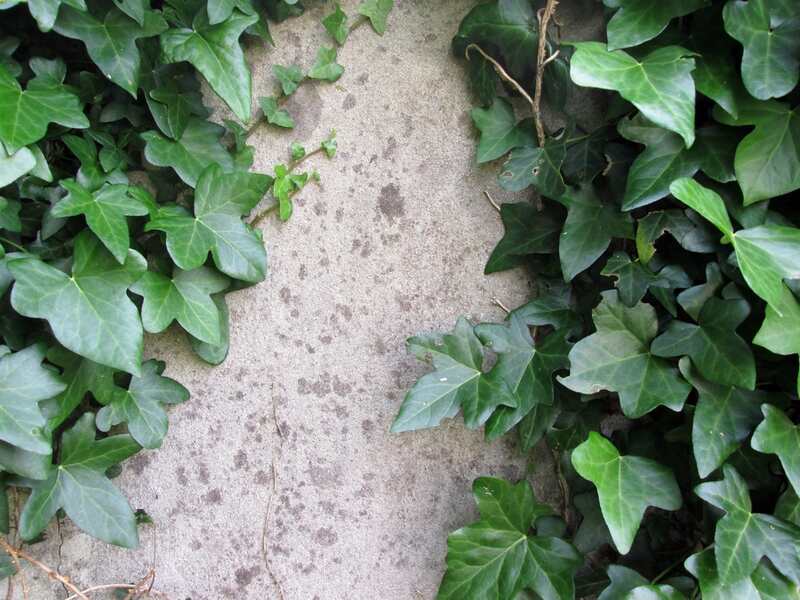
Cats can become sick if they ingest the leaves or berries of English ivy, a common ground cover and vining plant across the U.S.
Identifying features: Fast-growing climbing vine or ground cover with small, glossy green leaves with white veins and three points
Toxins: The leaves and berries contain triterpenoid saponins, which irritate the gastrointestinal system..
Signs your cat has eaten English ivy:
- Drooling
- Vomiting
- Abdominal pain
- Diarrhea
13. Eucalyptus
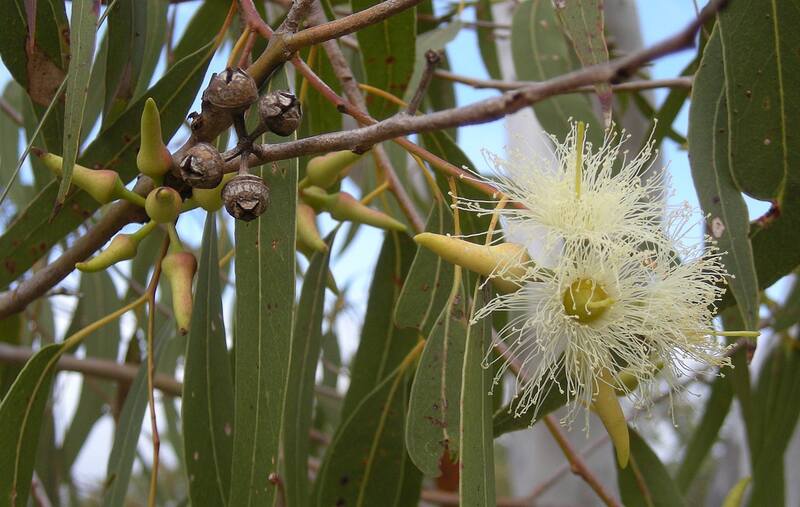
Koalas love eucalyptus, but cats don’t. Eucalyptus makes cats drool, throw up, and more.
Identifying features: Soft green, roundish leaves with a strong minty scent. Look for dried eucalyptus as decor and as a tree or shrub in many garden landscapes.
Toxicity: Eucalyptus oil can damage cats’ internal organs because they aren’t able to digest it. Look for dried eucalyptus as decor and as a tree or shrub in many garden landscapes.
Signs your cat has eaten eucalyptus:
- Drooling
- Vomiting
- Diarrhea
- Depression
- Weakness
14. Foxglove
Blooming in early summer, foxglove’s leaves, flowers, and seeds are deadly to cats.
Identifying features: Tall spikes of tubular, drooping flowers in varying shades of purple, pink, or white
Toxins: All parts of the plant contain cardiac glycoside toxins and poisons that affect the cardiac muscles and can lead to death.
Signs your cat has eaten foxglove:
- Irregular heart rate
- Weakness
- Vomiting
- Diarrhea
- Drooling
- Dilated pupils
- Seizures
15. Garlic
Your cat may not be attracted to the smell of garlic, but even a few nibbles can be deadly.
Identifying features: Grass-like foliage aboveground; garlic pods underground; garlic smell
Toxin: Garlic contains N-propyl disulfide, which causes gastrointestinal upset and anemia in cats if consumed in large quantities.
Signs your cat has eaten garlic:
- Weakness
- Rapid heart rate
- Panting
- Bloody urine
- Vomiting
- Diarrhea
- Abdominal pain
- Lethargy
- Pale gums
- Collapse
16. Hyacinth
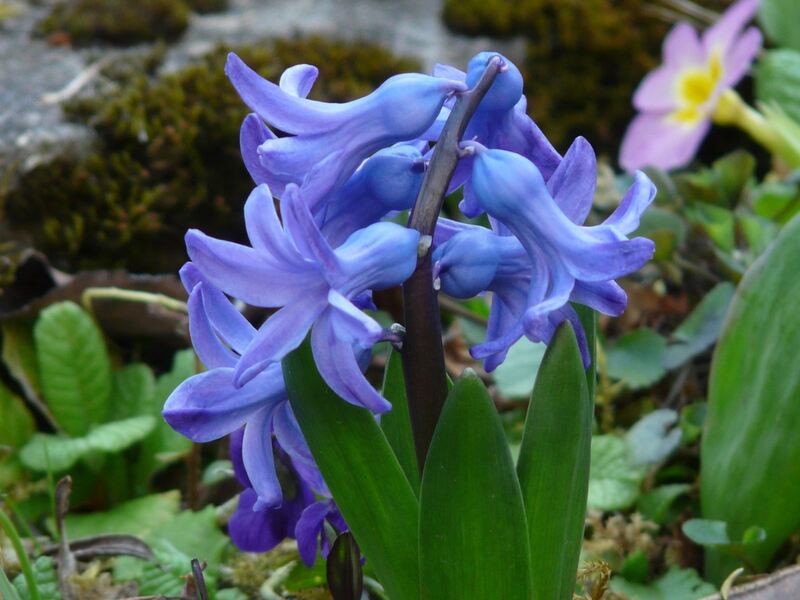
Cats are attracted to hyacinth’s bright colors and fresh fragrance, but even inhaling the scent can cause respiratory upset for your cat.
Identifying features: Rounded spikes of small flowers in spring colors such as lavender, pink, purple, blue, or white
Toxin: The plant, especially the bulbs, contains the toxin lycorine, which induces vomiting and gastrointestinal upset.
Signs your cat has eaten hyacinth:
- Severe vomiting
- Diarrhea
- Blood in urine or feces
- Drooling
- Rapid heart rate
- Difficulty breathing
- Depression
- Tremors
17. Hydrangea
Many of us bring hydrangea into our homes as cut flowers. Keep these poisonous blooms from your cat, as hydrangea can cause severe intestinal upset.
Identifying features: Shrubs with round clusters of small flowers in blue, pink, purple, or white
Toxins: The leaves and flowers contain cyanogenic glycosides, which disturb the gastrointestinal system when ingested.
Signs your cat has eaten hydrangea:
- Vomiting
- Diarrhea
- Depression
- Lethargy
18. Iris
Keep your cat away from all parts of the iris, an early spring bloomer.
Identifying features: Unique-shaped flowers with petals that droop from the center in an irregular pattern. Flowers are usually blue or violet with traces of white and yellow, but iris comes in so many colors and varieties.
Toxins: All species of irises contain glycoside compounds, which irritate internal tissue and can potentially cause a variety of health issues.
Signs your cat has eaten iris:
- Drooling
- Vomiting
- Diarrhea
- Lethargy
19. Jade
Green is good, usually. Jade leaves can make upset your cat’s stomach, motor skills issues, and depression.
Identifying features: Glossy, dark green succulent leaves with an oblong shape
Toxins: The leaves contain unknown toxins that cause symptoms in cats.
Signs your cat has eaten jade:
- Vomiting
- Loss of coordination
- Depression
20. Kalanchoe
Kalanchoe can mess with your cat’s digestion and heart.
Identifying features: Glossy, scallop-edged, dark green leaves; clusters of small rosette flowers in shades of yellow, orange, pink, red, or white
Toxins: All parts of the plant contain bufadienolides, toxins that affect the cardiac muscles and irritate the gastrointestinal tract of cats. Ingested in large amounts can cause cardiac issues for your pets.
Signs your cat has eaten kalanchoe:
- Vomiting
- Diarrhea
- Abnormal heart rate
- Weakness
- Collapse
21. Lilies
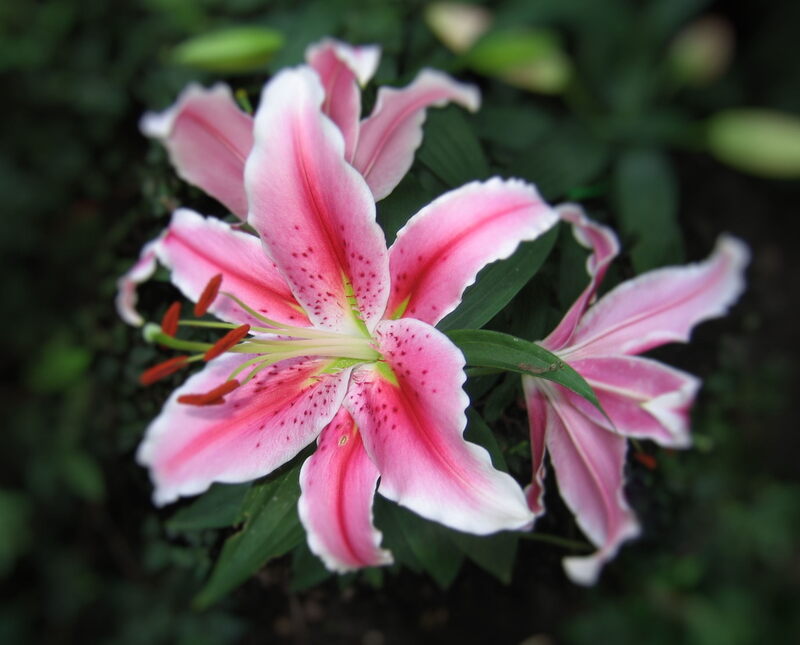
Keep your cat away from lilies in your yard or as cut flowers in your house. Here’s why: All parts of lilies contain toxins that can cause kidney failure, even if your cat only nibbles a tiny amount or gets into the water from the vase.
How to identify lilies: Central stem with surrounding leaves and flowers that sprout from the top of the stem. The flowers are trumpet-shaped and have approximately six stamens and petals bursting from the center.
What part is poisonous to your cat? The entire plant is toxic to felines and causes kidney failure. Be careful about leaving a vase out with water from lilies. If your cat drinks the water, it will get sick from just that. Even licking a bit of pollen off its fur can prove fatal.
Signs your cat has eaten a lily:
- Excessive thirst
- Weakness
- Loss of appetite
- Changes in behavior
- Diarrhea that may contain blood
- Vomiting that may contain blood
Seek urgent medical attention if your cat eats this plant.
Note: There are many different types of lilies but true lily plants are the ones to look out for when it comes to protecting your four-legged friend. These species of lilies are all poisonous to cats:
- Asiatic lilies
- Easter lilies
- Japanese show lilies
- Rubrum lilies
- Stargazer lilies
- Red lilies
- Tiger lilies
- Western lilies
- Wood lilies
- Daylilies
Fun Fact: While most lilies are poisonous to cats, humans are actually able to eat daylilies. They’re an edible flower for us and go well with Chinese cuisine.
22. Lily of the Valley
Lily of the valley is extremely toxic to your cat.
Identifying features: Spear-shaped leaves growing in a cluster; tiny white, bell-shaped flowers drooping from stems among the leaves
Toxins: All parts of lily of the valley contain cardiac glycosides, which affect the heart and the gastrointestinal system of cats.
Signs your cat has eaten lily of the valley:
- Vomiting
- Diarrhea
- Abnormal heart rate
- Disorientation
- Seizures
23. Oleander

If your cat eats oleander, it’s an emergency. In severe cases, ingestion can be fatal to cats.
Identifying features: Large, mounding shrubs with clusters of small, delicate flowers in pink, white, peach, yellow, or burgundy
Toxins: All parts of the plant contain cardiac glycoside toxins, which interfere with the heart muscle and often cause gastrointestinal upset.
Signs your cat has eaten oleander:
- Drooling
- Abdominal pain
- Diarrhea
- Vomiting
- Abnormal heart rate
- Seizures
24. Peace Lily
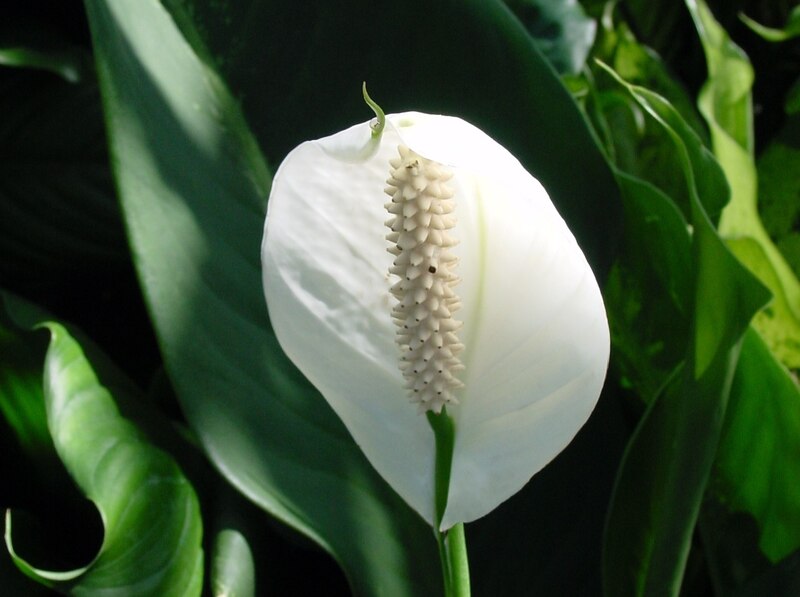
Peace lily is toxic to cats. It can cause intestinal distress and breathing issues if eaten by cats.
Identifying features: Large, waxy, dark green leaves and stalks with a single flower each; flowers are creamy-white with a cylindrical seed pod in the center
Toxins: All parts of the plant contain sharp insoluble calcium oxalate crystals, which will pierce the mouth and gastrointestinal tract tissue. In severe cases, the upper airway may swell, making breathing difficult for your cat.
Signs your cat has eaten peace lily:
- Burning or irritation in the mouth, tongue, and lips
- Drooling
- Vomiting
- Difficulty swallowing
- Loss of appetite
- Rarely: Difficulty breathing
25. Poinsettia
The popular misconception that poinsettias are highly poisonous and dangerous is wrong. However, your cat can experience mild health effects if it eats this holiday favorite.
Identifying features: Soft, velvety dark green leaves and large, bright red flowers
Toxicity: The milky sap of poinsettia plants is mildly toxic and may cause irritation.
Signs your cat has eaten poinsettia:
- Oral irritation
- Skin irritation
- Drooling
- Vomiting
- Diarrhea
26. Sago Palm
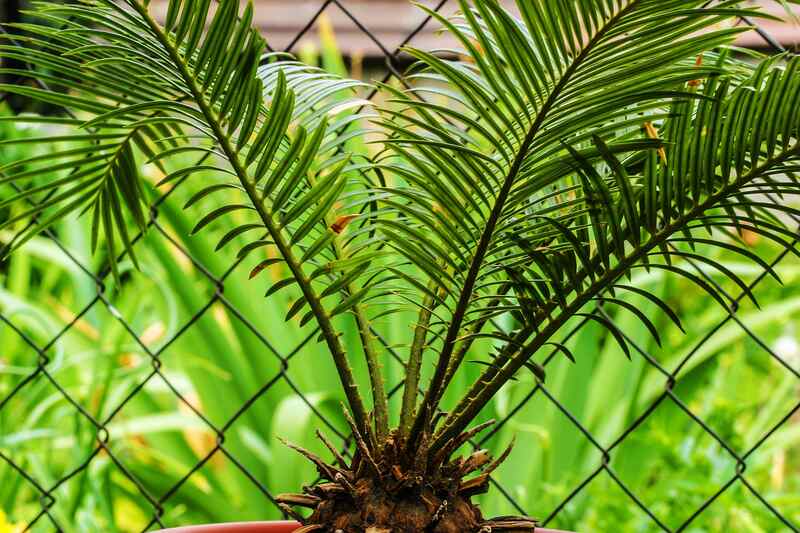
Sago palm can kill your cat. It’s that simple. Ingesting sago palm can lead to death if your cat doesn’t receive medical attention quickly.
Identifying features: Stiff, waxy fronds; spiky trunk; seed pods growing in the center can be tall and cone-like (male plants) or squat and round (female plants)
Toxin: All parts of the sago palm contain cycasin, a dangerous toxin that affects the liver, nervous system, and gastrointestinal system. The poison is most highly concentrated in the seeds.
Signs your cat has eaten sago palm:
- Vomiting
- Excessive thirst
- Loss of appetite
- Drooling
- Diarrhea
- Weakness
- Abdominal pain
- Seizures
- Lethargy
- Black, tarry stool
27. Snake Plant
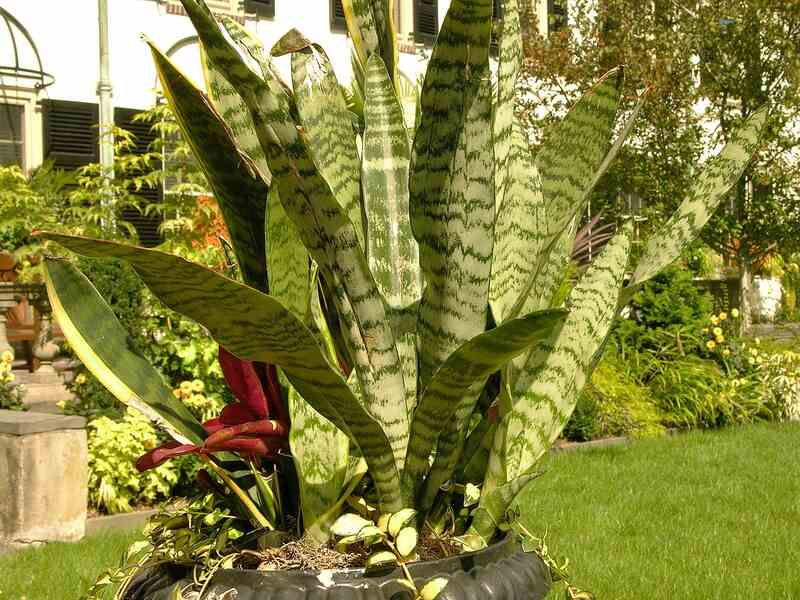
Snake plant is often used in home decor and may seem harmless to curious cats. It’s not. Snake plant is poisonous to cats.
Identifying features: Long, upright leaves that resemble kelp
Toxins: All parts of the snake plant contain saponins, which affect the gastrointestinal system and sometimes the respiratory system and neurological pathways of cats.
Signs your cat has eaten part of a snake plant:
- Vomiting
- Diarrhea
- Loss of appetite
- Lethargy
- Drooling
28. Spanish Thyme
Spanish thyme is toxic to cats, causing stomach upset sometimes resulting in bloody vomit and/or diarrhea.
Identifying features: Small, roundish, light green leaves with serrated edges and sometimes with light yellow variegation. Spanish thyme is a herb that belongs to the mint family. Its strong smell could repel your cat, but to be sure, keep pungent herbs away from your pets.
Toxins: All parts of Spanish thyme contain essential oils that will upset your cat’s stomach if ingested or cause skin irritation on contact.
Signs your cat has eaten Spanish thyme:
- Vomiting (sometimes bloody)
- Diarrhea (sometimes bloody)
- Loss of appetite
- Depression
29. Tomato Plant
Yes, tomato plants are toxic to cats.
Identifying features: Feathery green leaves; tomato fruits
Toxin: The green parts of the plant, not the ripe tomato fruit itself, contain solanine, which affects the gastrointestinal tract when consumed in large quantities. Keep your cats away from tomato plants, as the leaves, roots, and seeds are toxic to your cat.
Signs your cat has eaten a tomato plant:
- Drooling
- Loss of appetite
- Weakness
- Depression
- Lethargy
- Dilated pupils
- Slow heart rate
- Confusion
- Vomiting
- Diarrhea
30. Tulips
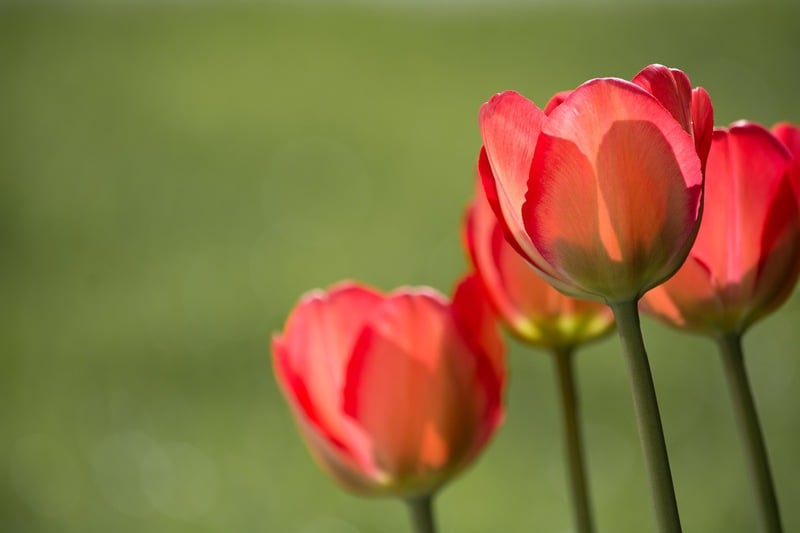
If your cat ingests any part of a tulip, contact animal poison control or your veterinarian. It’s that serious.
Identifying features: Plump, rounded, cup-shaped bulbs in varying colors, including pink, red, yellow, purple, orange, white, or multicolor
Toxins: All parts of tulip plants contain allergenic lactones or similar alkaloids, which cause mouth and digestive tract irritation in small amounts or more severe internal issues in large amounts. The bulbs contain a higher concentration of toxins than the leaves or stems. .
Signs your cat has eaten tulips:
- Drooling
- Vomiting
- Diarrhea
- Depression
- When consumed in large amounts: Increased heart rate
- When consumed in large amounts: Difficulty breathing
31. Wisteria
Gorgeous in springtime, wisteria is poisonous to cats.
Identifying features: Drooping lavender flowers that resemble clumps of grapes
Toxins: The wisteria plant, especially the seeds and pods, contain lectin and wisteria glycoside, which can upset the gastrointestinal system of cats as a toxin.
Signs your cat has eaten wisteria:
- Vomiting (sometimes bloody)
- Diarrhea
- Depression
32. Yew
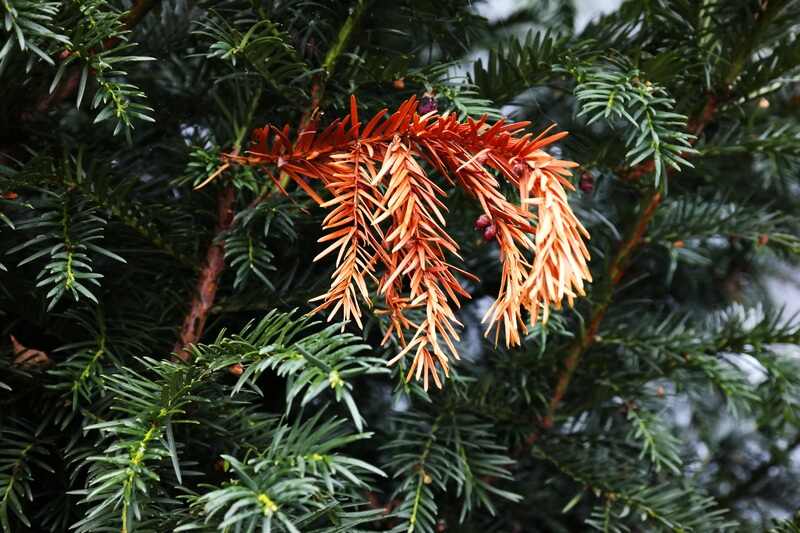
Consuming any part of a yew is deadly to your cat.
Identifying features: Spiky, needle-like foliage; red berries
Toxins: All parts of the plant are extremely poisonous. They contain toxins that affect the cardiovascular system and can cause acute heart failure.
Signs your cat has eaten any part of a yew:
- Drooling
- Vomiting
- Difficulty breathing
- Seizures
- Weakness
- Drops in heart rate
- Dilated pupils
Signs and Symptoms of Poisoning In Cats
Depending on what your cat nibbles on, the symptoms could look different. But if you know cats, any symptoms should be a significant sign of concern. According to the ASPCA, cats are known for hiding away if they’re experiencing pain or discomfort.
Now that you know some of the plants that are poisonous to cats, it will be easier to determine if your cat has eaten something poisonous by reading through the most common symptoms below:
- Vomiting
- Diarrhea or bloody diarrhea
- Seizures
- Panting
- Irritated skin
- Pale gums
- Swelling of the mouth, lips, or tongue
- Lethargy
- Thirst
- Tremors
- Sensory loss like eyesight
- Respiratory issues
- Cardiac symptoms like abnormal heart rate and blood pressure
- Loss of balance
- Fever
- Sweating
- Abdominal pain
- Drooling
- Inability to swallow
- Loss of appetite
- Depression or general behavioral changes
- Tremors
- Lethargy
- Weakness
- Loss of consciousness
If your cat is experiencing any of the above symptoms, get in touch with a veterinary medical professional. Even if you don’t have any of these plants at home, you’re better safe than sorry.
What To Do if Your Cat Eats a Poisonous Plant
Seek veterinary attention first. More information is available for any emergencies at these resources:
If any of the symptoms mentioned beforehand occur after you noticed the cat getting into one of your houseplants, these are some practical steps to take straight away:
- Get rid of any plant matter from the source. If it’s on or in your cat’s mouth, remove it. Clean any bits of it off their body, fur, and paws.
- Observe your cat for signs and symptoms of poisoning. It’s easier to watch them if you put them in a small and enclosed space. You want to keep them from hiding away.
- Call a helpline like the ASPCA’s Animal Poison Control line (1-888-426-4435) or the Pet Poison Helpline (1-855-764-7661). They’re open 24/7/365 a year. Note: these lines might charge a fee for a consultation. The professionals will be able to make a judgment call on whether or not you need to take a trip to the animal hospital.
- If your cat’s symptoms get worse and you still don’t have a response or clear answer from the helpline, seek veterinary attention immediately.
FAQ About Cats and Poisonous Plants
There are plenty of feline-friendly and common house plants that look just as stunning as lilies and tulips. They won’t put your pet at risk and will increase the ambiance of any space in your home. Some great plants that are harmless to cats include:
● Orchids
● Baby tears
● Friendship plants
● Gerber daisies
● Kitchen herbs like thyme and basil are both pretty and practical
If your cat enjoys an outdoor rendezvous, consider planting the following non-toxic plants:
● Sunflowers
● Bamboo
● Roses
● Money tree
● Magnolia tree
Ultimately, the best prevention method is to avoid poisonous plants in your cat’s space. Whether your kitty is an indoor-only pet or ventures into the great outdoors, do what you must to remove and rid your cat’s home of poisonous plant species.
When to Hire a Landscaping or Lawn Care Pro
Removing poisonous plants from your home and yard takes hard work. If you haven’t got the time to remove your lilies, daffodils, and tulips, consider hiring a landscape professional to do the job for you.
Take your lawn’s cat-friendliness one step further by hiring a local lawn care pro for consistent mowing and maintenance. Tall, untidy grass can be a breeding ground for ticks and fleas waiting to cling to your pets.
Main Image Credit: Lestat (Jan Mehlich) / Wikimedia Commons / CC BY-SA 3.0